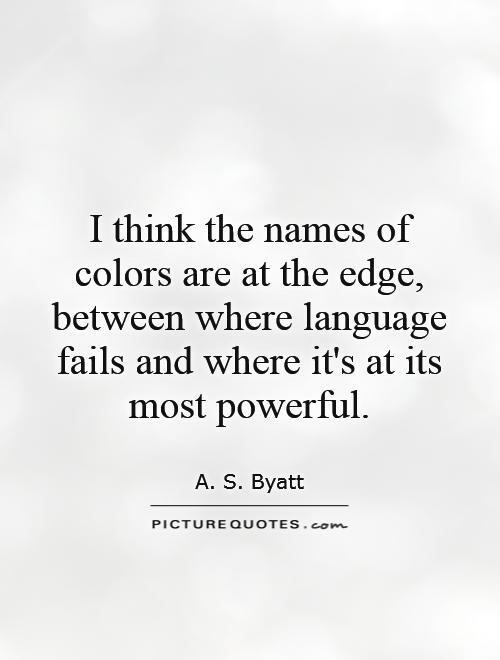I think the names of colors are at the edge, between where language fails and where it's at its most powerful

I think the names of colors are at the edge, between where language fails and where it's at its most powerful
In her novel "Possession," A.S. Byatt explores the power of language and the ways in which it can both illuminate and obscure our understanding of the world. One of the most striking examples of this is her discussion of the names of colors and their relationship to language.Byatt suggests that the names of colors occupy a liminal space between the limitations of language and its potential for expression. On the one hand, the names of colors are inherently arbitrary and subjective. As Byatt writes, "What is the color of the word 'blue'?" This question highlights the fact that the names we give to colors are ultimately just labels, and can never fully capture the richness and complexity of the colors themselves.
At the same time, Byatt argues that the names of colors are also incredibly powerful. They allow us to communicate and share our experiences of the world with others, and to create connections and meanings that transcend language. Byatt writes, "The names of colors are at the edge, between where language fails and where it's at its most powerful." In this way, the names of colors serve as a bridge between the limitations of language and its potential for expression.
Byatt's exploration of the names of colors in "Possession" reflects her broader interest in the ways in which language shapes our understanding of the world. Throughout the novel, Byatt plays with language and its limitations, using poetry, letters, and other forms of communication to explore the complexities of human relationships and the power of words to both reveal and conceal our innermost thoughts and feelings.












 Friendship Quotes
Friendship Quotes Love Quotes
Love Quotes Life Quotes
Life Quotes Funny Quotes
Funny Quotes Motivational Quotes
Motivational Quotes Inspirational Quotes
Inspirational Quotes